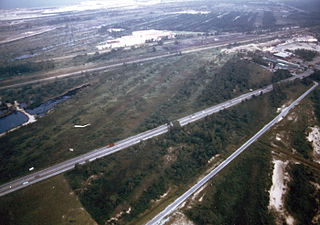
The London boroughs are the 32 local authority districts that make up the Greater London county; each is governed by a London borough council. The London boroughs were all created at the same time as Greater London on 1 April 1965 by the London Government Act 1963 and are a type of local government district. Twelve were designated as Inner London boroughs and twenty as Outer London boroughs.
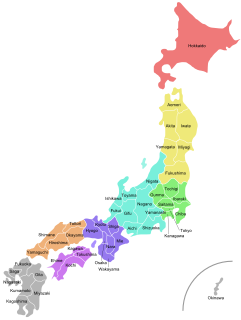
Japan is divided into 47 prefectures, forming the first level of jurisdiction and administrative division. They consist of 43 prefectures proper, two urban prefectures, one "circuit" or "territory" and one "metropolis". The Meiji Fuhanken sanchisei administration created the first prefectures from 1868 to replace the urban and rural administrators in the parts of the country previously controlled directly by the shogunate and a few territories of rebels/shogunate loyalists who had not submitted to the new government such as Aizu/Wakamatsu. In 1871, all remaining feudal domains (han) were also transformed into prefectures, so that prefectures subdivided the whole country. In several waves of territorial consolidation, today's 47 prefectures were formed by the turn of the century. In many instances, these are contiguous with the ancient ritsuryō provinces of Japan.
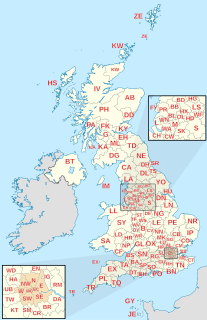
Postal codes used in the United Kingdom are known as postcodes. They are alphanumeric and were adopted nationally between 11 October 1959 and 1974, having been devised by the General Post Office. A full postcode is known as a "postcode unit" and designates an area with a number of addresses or a single major delivery point.

Metro Vancouver is a political body and corporate entity designated by provincial legislation as one of the regional districts in British Columbia, Canada. The official legal name is the Metro Vancouver Regional District (MVRD), the organization was formerly known as the Greater Vancouver Regional District (GVRD) from 1968 to 2017. Further, it was known as the Regional District of Fraser–Burrard for nearly one year upon incorporating in 1967.

SWOT analysis is a strategic planning technique used to help a person or organization identify strengths, weaknesses, opportunities, and threats related to business competition or project planning. It is intended to specify the objectives of the business venture or project and identify the internal and external factors that are favorable and unfavorable to achieving those objectives. Users of a SWOT analysis often ask and answer questions to generate meaningful information for each category to make the tool useful and identify their competitive advantage. SWOT has been described as the tried-and-true tool of strategic analysis.
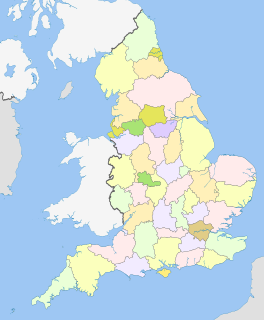
The counties of England are areas used for different purposes, which include administrative, geographical, cultural and political demarcation. The term 'county' is not clearly defined and can apply to similar or the same areas used by each of these demarcation structures. These different types of county each have a more formal name but are commonly referred to just as 'counties'. The current arrangement is the result of incremental reform.
Land-use planning is the process of regulating the use of land in an effort to promote more desirable social and environmental outcomes as well as a more efficient use of resources. Goals of land-use planning may include environmental conservation, restraint of urban sprawl, minimization of transport costs, prevention of land-use conflicts, and a reduction in exposure to pollutants. By and large, the uses of land determine the diverse socioeconomic activities that occur in a specific area, the patterns of human behavior they produce, and their impact on the environment.
Agile software development is an approach to software development under which requirements and solutions evolve through the collaborative effort of self-organizing and cross-functional teams and their customer(s)/end user(s). It advocates adaptive planning, evolutionary development, empirical knowledge, and continual improvement, and it encourages rapid and flexible response to change.
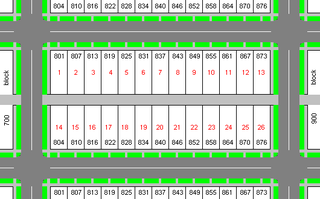
A city block, urban block or simply block is a central element of urban planning and urban design.
A town centre is the commercial or geographical centre or core area of a town. Town centres are traditionally associated with shopping or retail. They are also the centre of communications with major public transport hubs such as train or bus stations. Public buildings including town halls, museums and libraries are often found in town centres.
The administrative divisions of Wisconsin include counties, cities, villages and towns. In Wisconsin, all of these are units of general-purpose local government. There are also a number of special-purpose districts formed to handle regional concerns, such as school districts.
A sending/receiving relationship is one in which a public school district sends some or all of its students to attend the schools of another district. This is often done to achieve costs savings in smaller districts or continues after districts have grown as part of a historical relationship. The term is used in primary and secondary education in the states of New Jersey, Delaware, and Pennsylvania in the United States, although the concept exists in other states.

Lands administrative divisions of Australia are the cadastral divisions of Australia for the purposes of identification of land to ensure security of land ownership. Most states term these divisions as counties, parishes, hundreds, and other terms. The eastern states of Queensland, New South Wales, Victoria and Tasmania were divided into counties and parishes in the 19th century, although the Tasmanian counties were renamed land districts in the 20th century. Parts of South Australia (south-east) and Western Australia (south-west) were similarly divided into counties, and there were also five counties in a small part of the Northern Territory. However South Australia has subdivisions of hundreds instead of parishes, along with the Northern Territory, which was part of South Australia when the hundreds were proclaimed. There were also formerly hundreds in Tasmania. There have been at least 600 counties, 544 hundreds and at least 15,692 parishes in Australia, but there are none of these units for most of the sparsely inhabited central and western parts of the country.

Shropshire Council is the local authority of Shropshire in England. It is a unitary authority, having the powers of a non-metropolitan county and district council combined.

The United States House of Representatives is the lower chamber of the United States Congress, the Senate being the upper chamber. Together they comprise the legislature of the United States.
An urban planner is a professional who practices in the field of urban planning.
Norway's elongated shape, its numerous internal geographical barriers, and the often widely dispersed and separated nature of its settlement patterns are all factors that have strongly influenced the structure of the country's administrative subdivisions. It is a structure that has not only been subject to modification over time but one that remains subject to continuous review. As of late 2018, plans are nearing completion for a reform of the country's administrative divisions intended to lead, most notably, to the replacement of Norway's current 19 fylker (counties) by 11 new regioner (regions).

